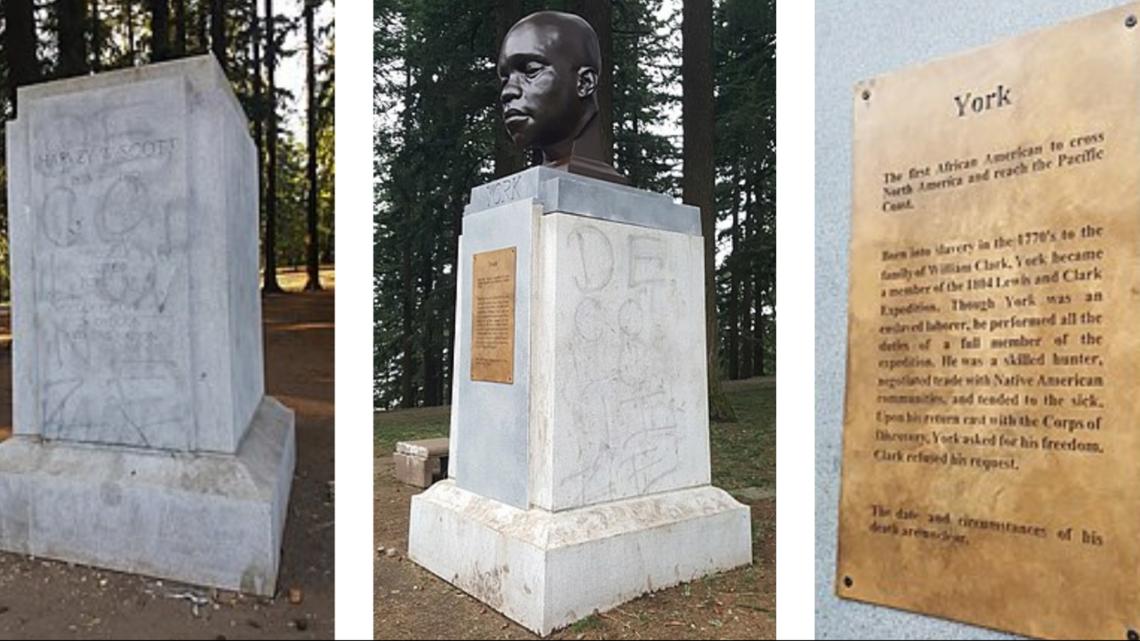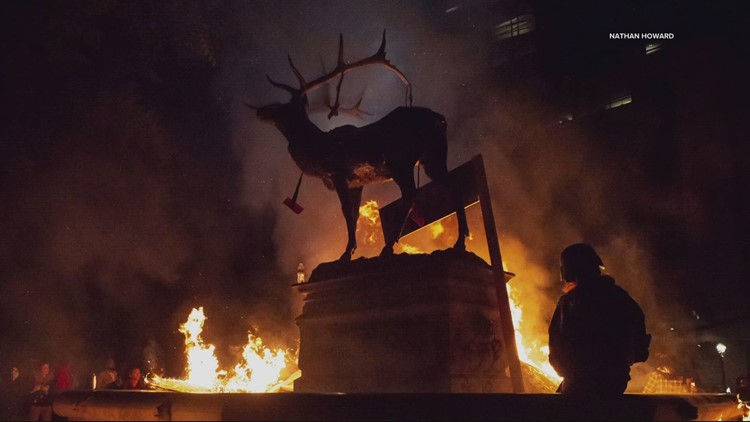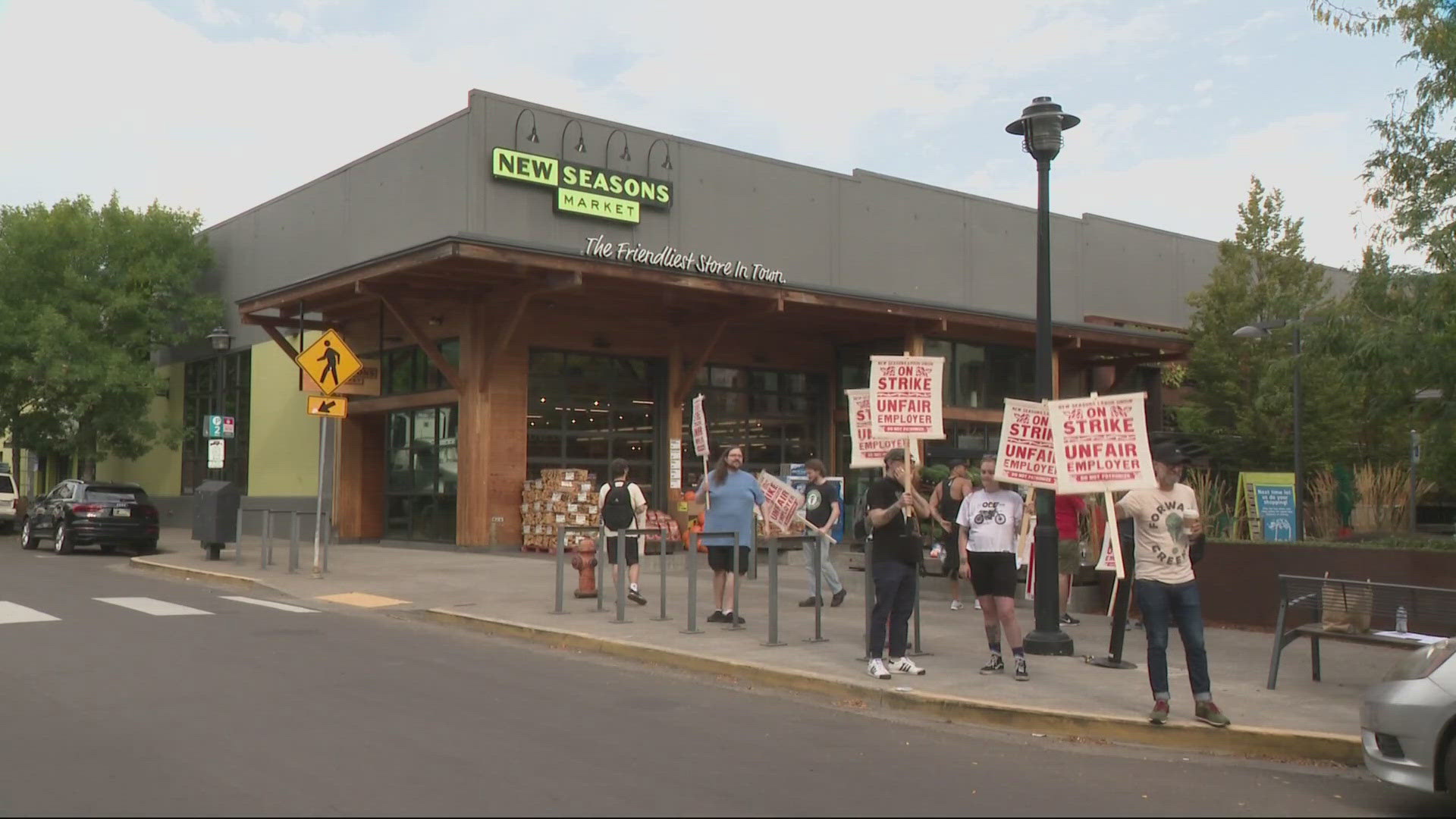PORTLAND, Ore. — During the summer and into fall of 2020, Portland statues fell like leaves. Spurred by racial justice protests following the murder of George Floyd, demonstrators targeted and toppled historical figures for their ties to racism, colonialism, misogyny or some combination of the three.
Others, like the beloved Thompson elk statue, were damaged more out of inconsideration than malice.
In the years since, the monuments have mostly languished amid delays and hand-wringing. At one point, the nonprofit Regional Arts & Culture Council recommended that only the elk statue be returned.
Now, Portland Commissioner Dan Ryan's office says there's a plan in place for each of these monuments — or at least the beginnings of one.
"The Monuments Project has been a long and complicated process — much like our nation’s long and complicated history — and while this process has been lengthy, we are finally making progress," Ryan said in a statement. "The Elk is returning, The Promised Land is retired, and the presidents are getting repaired.
"Portlanders will have many more opportunities to engage as we continue this dialogue — I am hopeful that when the monuments are returned with interpretations, they will serve to both inform and heal our community."
Here's what the Portland Monuments Project has to say about the status of each, including some unattributed quotes that city officials say is "representative feedback from public comments, testimony and City-led public conversations."
On Sept. 13-14, there will be a Portland Monuments Symposium to bring together discussion from the community, artists and leaders about the present and future of public art and monuments.
The Thompson Elk
Installed in 1900, the Thompson Elk Fountain was located between Chapman Square and Lownsdale Square in downtown Portland. During the protests of 2020, demonstrators tended to gather around the statue, covering the base with graffitied slogans, and eventually lighting a bonfire beneath it in early July. The fire seriously damaged the statue's base, prompting the city to remove both the statue and the base.
For the elk statue, at least, public opinion has been practically unanimous in calling for its return — if not to the original location, then somewhere else in the city. There's also been more community support behind funding its restoration, putting it ahead of the pack.
According to the Monuments Project, repairs on the statue are complete, and groundbreaking for construction of the fountain at its original location is planned for fall 2024.

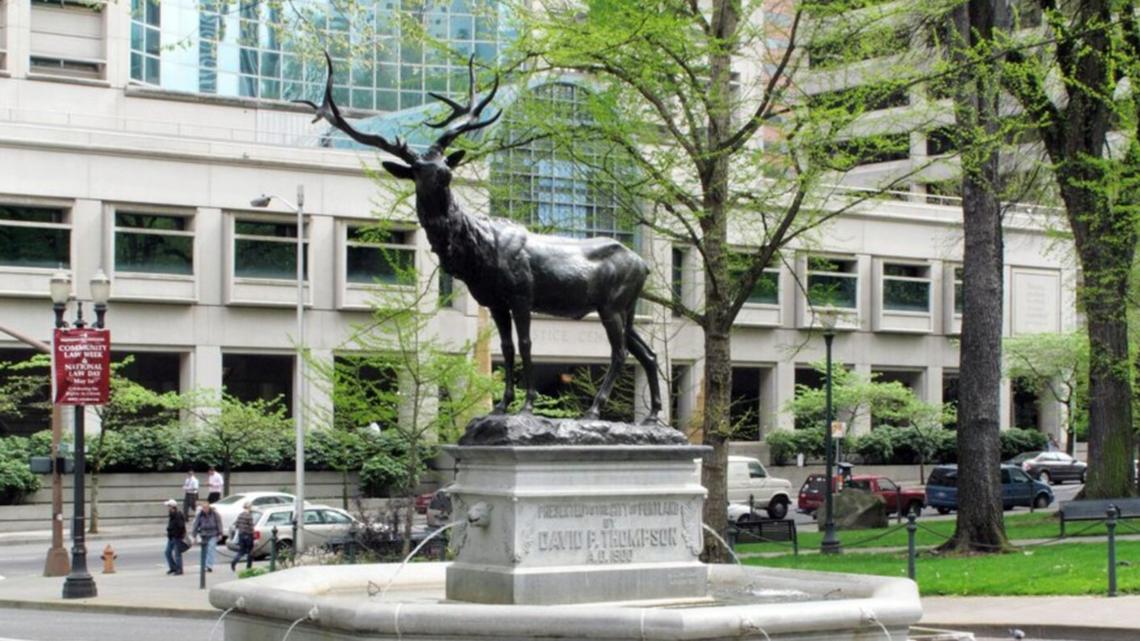
George Washington
The statue of George Washington, installed in 1926, used to sit outside the German American Society of Portland at Northeast 57th Avenue and Sandy Boulevard. It was toppled in June 2020 and has sat in storage, in need of repair, ever since.
In three unattributed quotes listed on the city's website, the consensus appeared to be that Washington, though a slave owner, should have his likeness returned.
“The statues of George Washington and Thomas Jefferson should be put back on their pedestals," one person said. "Even the U.S. Constitution allowed for slavery in their day. And what George Washington and Thomas Jefferson did to our country quite outweighs the fact they owned slaves.”
Unlike the Thompson Elk, Washington won't be returning to his original spot — but the city says it will be returning "to the public" after further engagement at the 2024 Monuments Symposium.

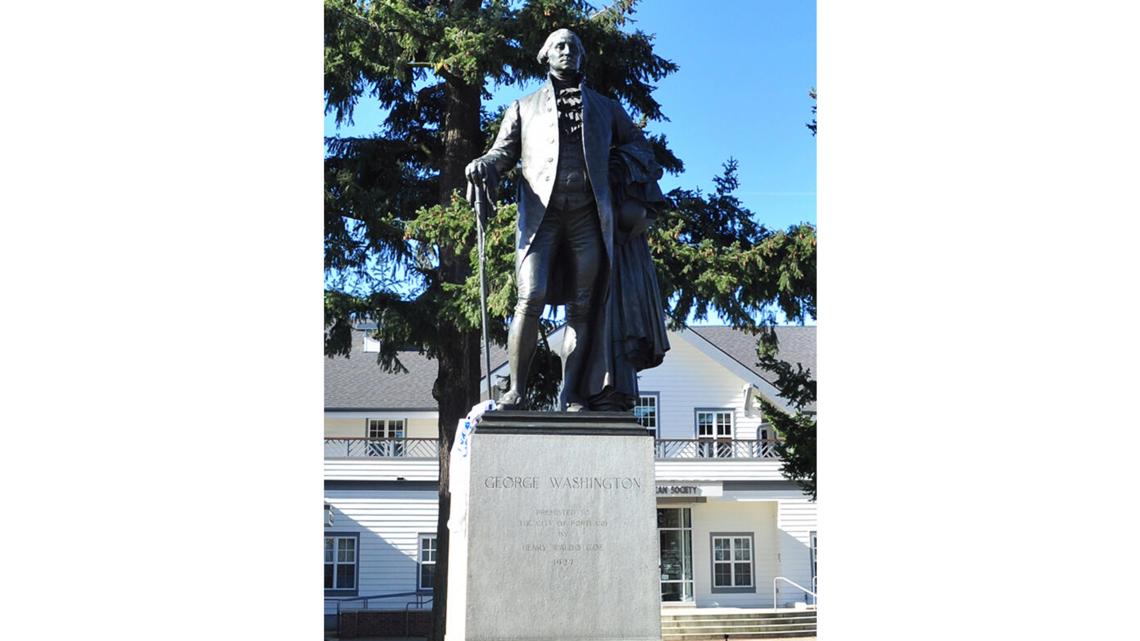
FROM 2021: Protesters tore down 3 statues of US presidents in Portland last year. What happened to them?
Abraham Lincoln
Originally located in the South Park Blocks, the statue of Abraham Lincoln was installed in 1927. It was one of several statues toppled in October 2020, during an "Indigenous People's Day of Rage."
“Abraham Lincoln had a huge role in ending slavery and moving this country forward in addressing racial injustices," one commenter said, in part. "Lincoln was by no means perfect, but it is wrong to dismiss him as not measuring up to current equity standards, ignoring historic context and his many dimensions. This is an arrogance of hindsight."
Unlike Washington, Lincoln could return to his original location after repairs. His statue will also be up for discussion at the 2024 Monuments Symposium.

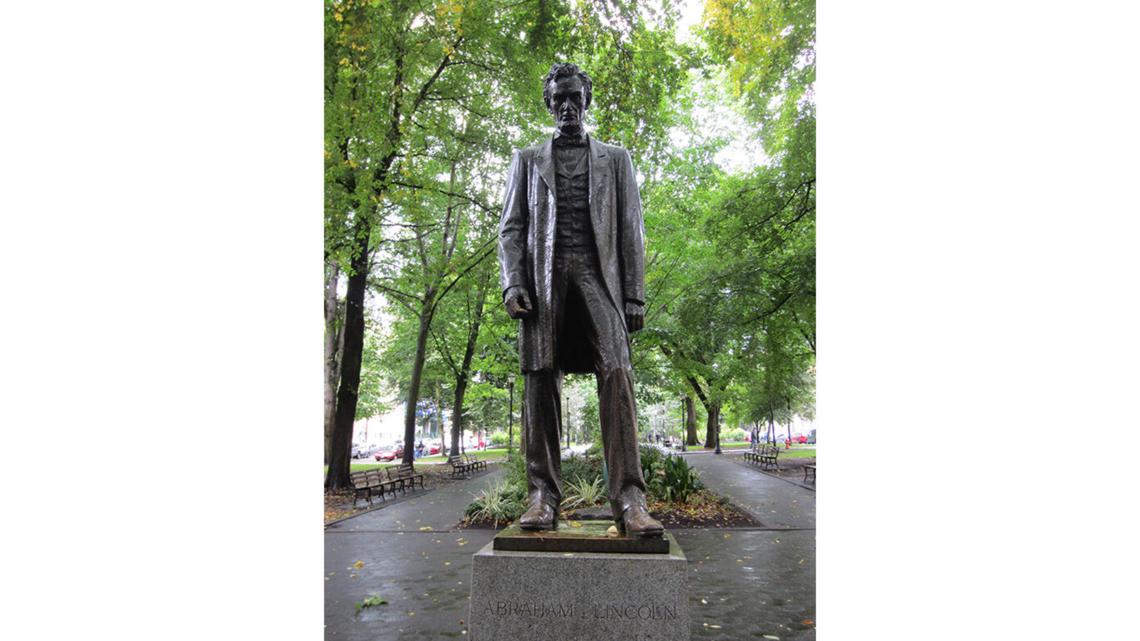
Theodore Roosevelt
The statue of Theodore Roosevelt likewise once resided in the South Park Blocks, installed in 1922 after being donated by Dr. Henry Waldo Coe, the same man responsible for the Lincoln statue. It was toppled alongside Lincoln in October 2020.
Roosevelt may not have the historical caché of Washington or Lincoln — he warranted fewer direct mentions and received a more lukewarm endorsement.
“Dr. Coe, friend to racist and anti-Indigenous Presidents Lincoln and Roosevelt, and respected doctor of 19th century psychiatry of the time, donated several statues to the City of Portland, held Alaska Natives captive in the Morningside Hospital and buried them away from their families and ceremonies here in Portland while the South Park Blocks were being developed and Portland continued to grow as a city," one person wrote, "an important point that cannot be ignored, even if the statues are removed.”
Regardless, the city said Roosevelt is slated to return to his original location in the South Park Blocks after repair and restoration. He'll also be featured during the 2024 Monuments Symposium.

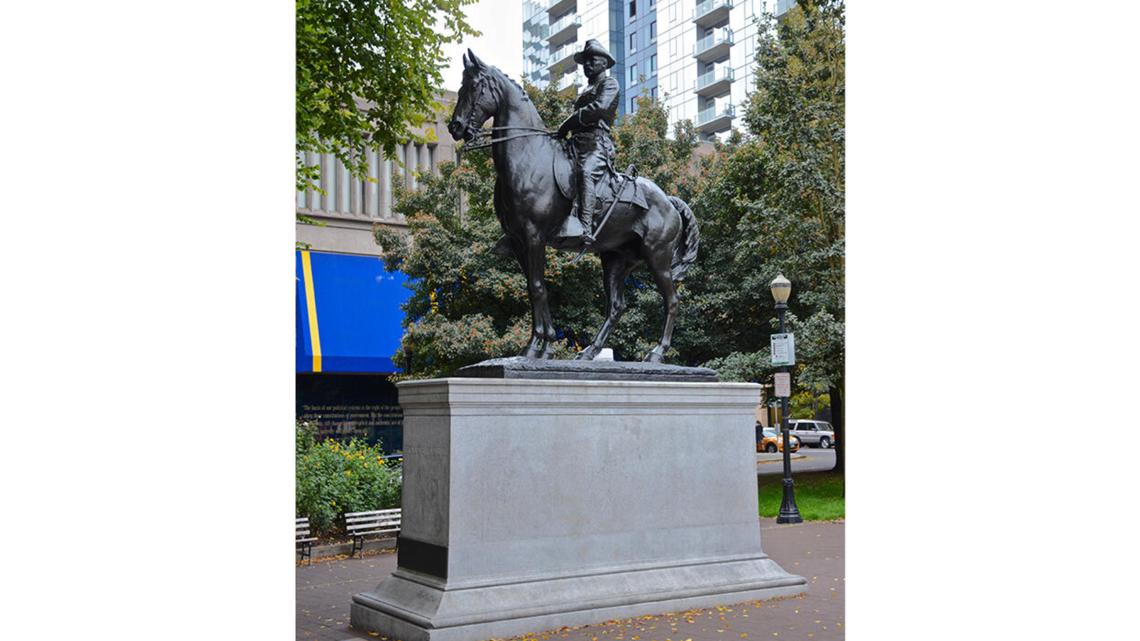
Promised Land
The statue known as "Promised Land" depicts a white settler, his wife and child. Installed in the center of Chapman Square in 1993, it was donated to the city by the Oregon Trail Coordinating Council. The Multnomah Arts Commission advised against accepting it at the time. It was damaged and removed during the 2020 protests.
“The depiction of subject matter was found to be (an) inappropriate and inaccurate portrayal of the settlers of Oregon, excluding the many other races and religions of those who have come to call Oregon home. It is also insensitive to the history of the indigenous peoples of the area."
The city attributed this quote to the Report on Site Committee I Process in “Metropolitan Arts Commission Special Arts Project Files — Promised Land Move."
Promised Land will not be returned to the city's public art collection, although it will be discussed during the symposium.

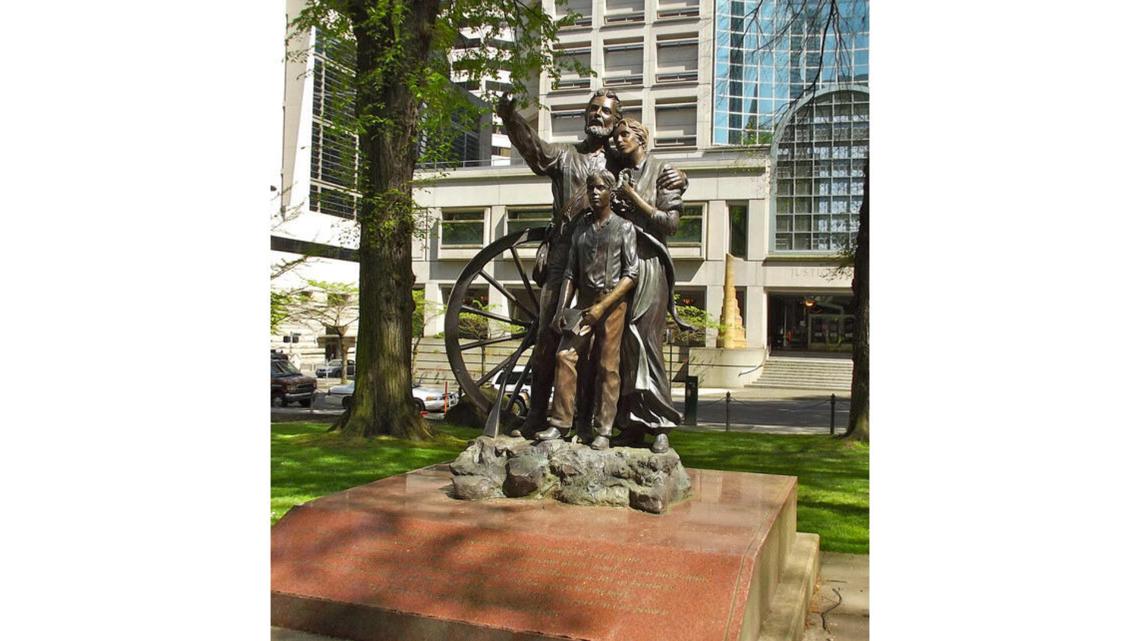
Harvey Scott
Harvey Scott was a writer, eventual editor-in-chief and part-owner of The Oregonian during the latter half of the 1800s. His wife donated a statue of him to the city, and it was installed in 1933 on the summit of Mount Tabor. Demonstrators toppled the Scott statue in October 2020, and it was placed in storage.
“I am glad to see the statue of Harvey Scott gone," one commenter wrote. "I have often walked by this monument and dreamed of it being replaced by one of his sister, Abigail Scott Duniway, a much more deserving person to honor. And it would only be appropriate to replace a tribute to someone who hindered the struggle for women's rights with an Oregonian who fought so hard for them. At the same time I also believe York (see below) should be honored and am glad to see a monument has been made to recognize his life.”
Like Promised Land, Scott's statue is being deaccessioned from the city's public art collection. That will be discussed during the symposium as well.


York
A bright spot during the topplings of 2020 was the appearance of a new statue on the pedestal where Harvey Scott once stood. An initially unknown artist created a guerilla art installation featuring a bust of York, a Black and enslaved man who crossed North America as part of the Lewis and Clark expedition.
While the artist who created the York bust, later identified as Todd McGrain, created it as a temporary installation, York stood at that spot for months. But he, too, later became a target of vandalism and eventual destruction in July 2021.
“I would like to say 'thank you' to the artist," one commenter said. "It was a beautiful guerilla piece of art and sculpture; it mattered, people who had never heard of York learned his story, people learned about revered figures who had kept slaves, people thought. When I went to see the sculpture, the feeling of awe and compassion was palpable. I would like to see the statue remain/return there in a more permanent state.”
Unlike the others, York represents a new addition to come out of the process, with city officials noting that a permanent monument will be "commissioned in spring 2024." There will be more public engagement during the 2024 Monuments Symposium.

